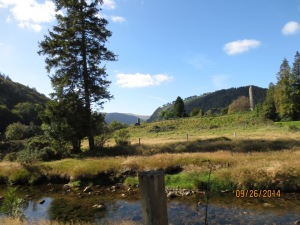
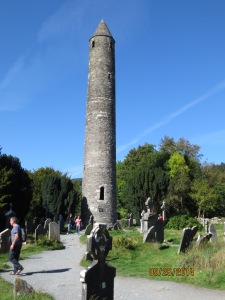
September 25th through the 30th was parent’s week here in Ireland. Emily, Olivia, and Aaron all had their parents come, and Aaron even had three of his seven adult brothers show up to surprise him! We spent this five day period traveling around and seeing things before classes really buckled down the next week. Friday was a trip to Glendalough, a monastic center built in the seventh century in one of the most beautiful places in Wicklow, the valley between the two lakes. Sunday we visited the unbelievably beautiful Powerscourt Estate, while Monday found us at the Dunbrody Famine
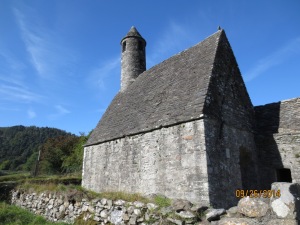
Ship, the JFK Homestead, and Hook Lighthouse. Tuesday we saw the Long Room in the library at Trinity College and the famous Book of Kells. I don’t have time to go through all of these sights individually, so I’m going to take you on a short tour of my favorite two, Glendalough and the Long Room/Book of Kells, in the context of how the Irish saved civilization (hint, they did it with literature!). In fact, I just finished reading a brilliant book by that very title for school. Definitely check it out! I might also add a bit on Hook Lighthouse because it was so fascinating.
The barbarian hordes which swept through Europe in the aftermath of the fall of the Roman Empire (5th century) cared little to nothing for literature. Libra
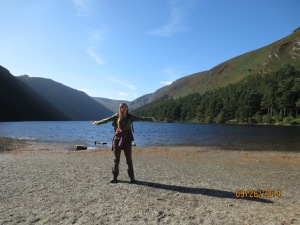
ries, such as the great one in Alexandria, were burned, and the words of the ages along with them. A small number of these ancient manuscripts, however (comparative to what there had once been), survived.
The Romans called Ireland Hibernia, which means land of eternal winter. Though they traded with the inhabitants of the island, they had very little desire to conquer it. Because of this, Ireland was never romanized. In other words, they had no written language, no infrastructure, and no formal government. Warring Gaelic tribes and kingdoms fought for dominance over the areas of Ulster, Munster, Connacht, Leinster, and Meath, along with countless other smaller tracts of land. There were no formal cities, and the religio
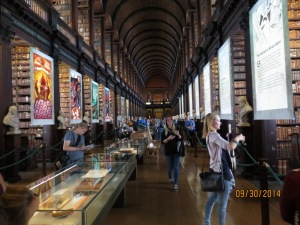
n which the people adhered to was a dark, uncertain, druid-led cult.
This is the world into which St. Patrick entered in 432 A.D. A Roman British noble’s son, he’d been captured by Irish pirates at sixteen and served an Irish chieftain for six years after that. He finally escaped and returned to Britain…only to begin having dreams in which he heard God calling him back to preach to the people who had once enslaved him. He brought Christianity to the Irish, and writing with it.
The Irish weren’t exposed to the carefully structured Catholic order of Roman Europe, and their church evolved differently. Holy men such as St. Kevin, the founder of Glendalough, went off in the wilderness to live lives of solitude and praye
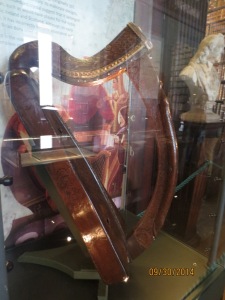
r, but they couldn’t control the crowds of disciples who came to learn from them. In time, these holy men (and women, like St. Brigid) began building monastic communities for the monks who followed them to live in, complete with gardens, stables, chapels, and guest houses. Always guest houses. Students came from all over Ireland – and soon from all across Europe – to learn from the monks at the monastic schools. Each monastery had a round stone tower with a pointed roof to draw travelers in the right direction.
For you see, now that the Irish had words, they couldn’t get enough of them. In the Scriptorium the monks copied not only t
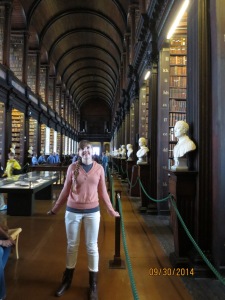
he Bible but also all the great works of classical literature which still remained in the world. Science, math, history, poetry – Homer and Virgil were just as well-loved as the Gospel of John to these men, who quickly learned every subject that they copied and taught it to their students. These little monastic cities could sometimes house a thousand people at a time, unheard of in their day. They were the great learning centers of the early medieval world (and also, of course, filled with the riches which the Vikings desired).
Th
e monks understood that literature and art go hand in hand. You can see this in the manuscripts that have survived from this period, such as the Book of Kells. This beautifully illuminated copy of the four gospels is decorated with some of the most expensive dyes which could be obtained – blue, yellow, red, pink, purple…these men truly saw the Bible as the greatest literary achievement the world has ever known, and so they strove to make it also one of the greatest artistic achievements. And so it is. This is
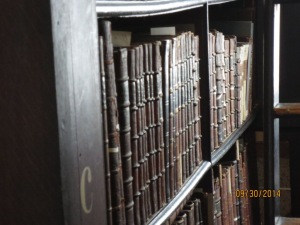
not art that overwhelms the words themselves, but art that does exactly what it is named for – it illuminates the words. Just as the human eye is drawn to a page that is in light as opposed to one in shadow, so the illumination of these manuscripts draws us to understand how special these words are, and to learn them and treasure them.
Triumphantly carrying their manuscripts tied to their belts like trophies of war, the Irish monks set sail from their beloved country and took these words into Europe and beyond, bringing literature back to a world which had forgotten it. Even to
day monasteries exist in France, England, Scotland, Switzerland, Austria, Germany, Ital
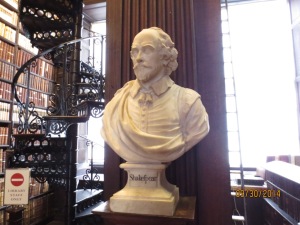
y, and beyond because of the Irish monks who traveled there. While the Dark Ages descended over the rest of the world in Rome’s wake, a tiny island on the fringe of Europe held on to the light, and, when the time came, spread that light to the four corners of the earth.
In case you were wondering, that’s how the Irish saved civilization.
The legacy continues, as one step into the Long Room will show you. The Irish still value literature and words as highly as ever. Many of the men who led the first uprisings against England, after all, were poets and schoolteachers. The Long Room is the old section of the Trinity College library and houses hundreds of books
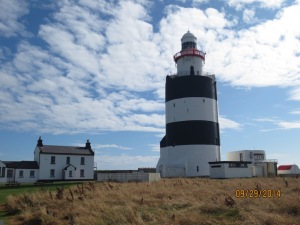
dating back to the 1800s and probably further. There are two levels in the room, as you’ll see from my pictures, reaching high to the vaulted ceiling above. There are 42 busts in the long room depicting giants in all fields of study, from Shakespeare to Locke to Newton. The cases lining the middle hold ancient artifacts which sometimes change depending on wh
at exhibit the room houses at the time. One artifact which is always there is the Harp of Brian Boru, which is the oldest Irish harp in existence today. It probably is not quite as old as the man it’s named for, but it’s very close. The day that we were there, the exhibit was on Brian Boru, the Irish hero known for having defeated the Vikings at the Battle of Clontarf in 1014 (the truth, of course, is a lot more complicated than that, there were Irish and Vikings on both sides). He was the first man to be able to unite all of Ireland under one banner – his own –
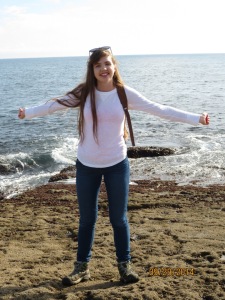
and claim the true high kingship of Ireland. This lasted only as long as he did, however, for Brian died in the battle and no one was ever able to unite Ireland after that until the English came (and that can hardly be called uniting it.)
It’s amazing, isn’t it? How one tiny island can completely change the course of history? In my opinion, no one has understood the art that literature is quite as well as the Irish, and I hope to gain some of that understanding myself in my own writing.
P.S. – Hook Lighthouse was my next favorite place (after those above).
It was first built in the 1200’s by monks. A Norman knight who owned the land commissioned it because so many ships wrecked off of the Hook Peninsula. Originally the monks would stay there in shifts, because so
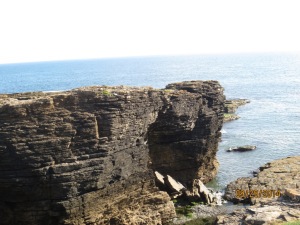
meone had to constantly keep the fire on top lit. In the 1500’s through the 1900’s the lighthouse keeper, the assistant lighthouse keeper, and their families all lived in the tower. Now it’s all electric and no one lives there, but the structure hasn’t changed since it was built in the 1200’s (save the addition of the light on top).
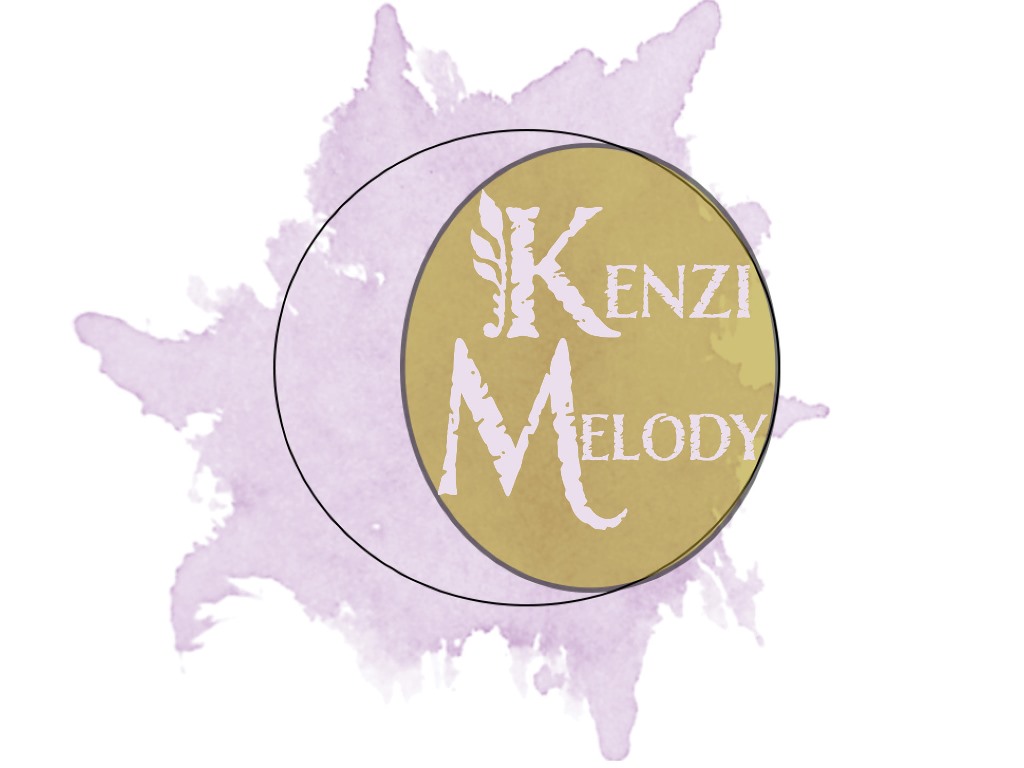
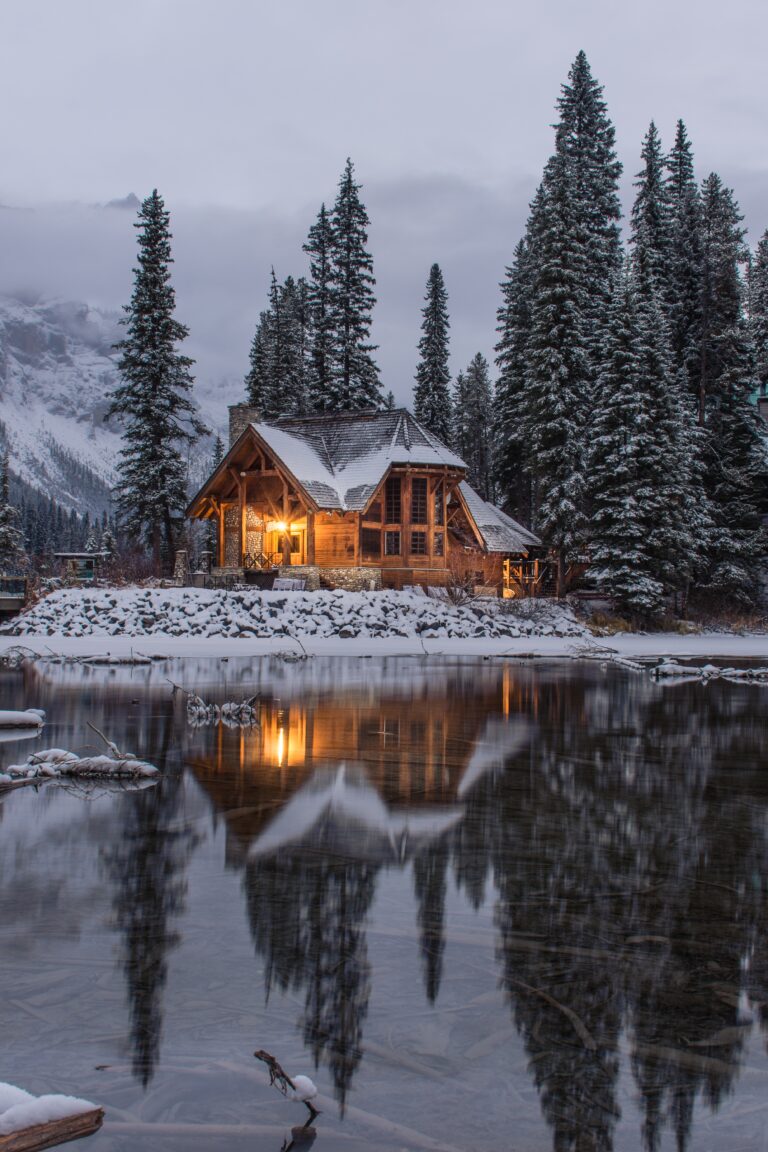
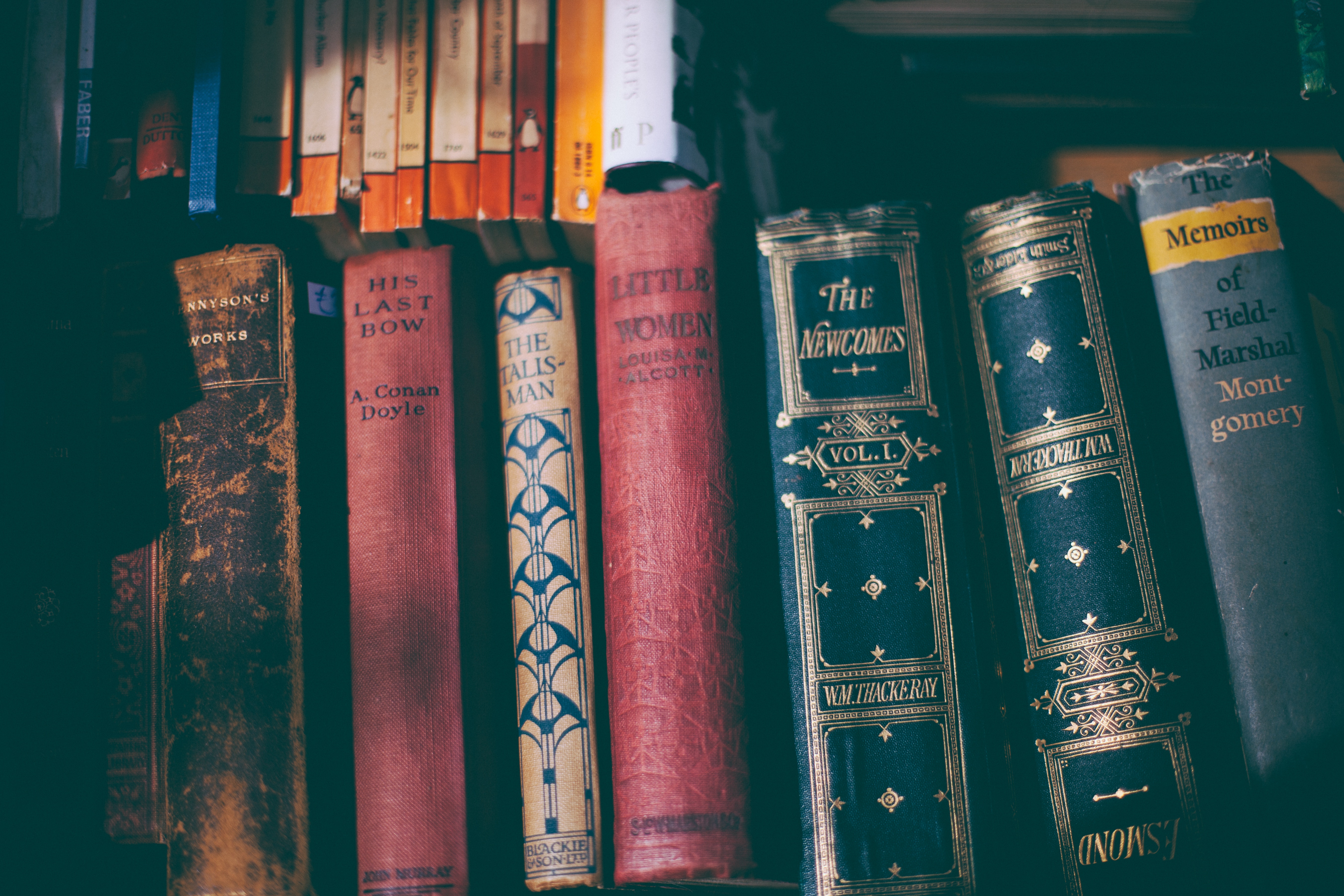



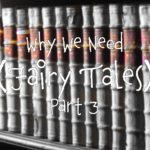
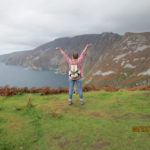




Wow! I can’t pick a favorite from all the places you’ve been and written about but this would be near the top of the list. Exciting to see pictures, hear first-hand about places and events we’ve only read of before.
i know! I loved this one so much that I took Mom and Mary Kate back to all of the places it mentions. It’s so cool to see God’s hand moving in history!